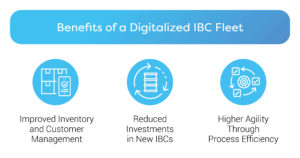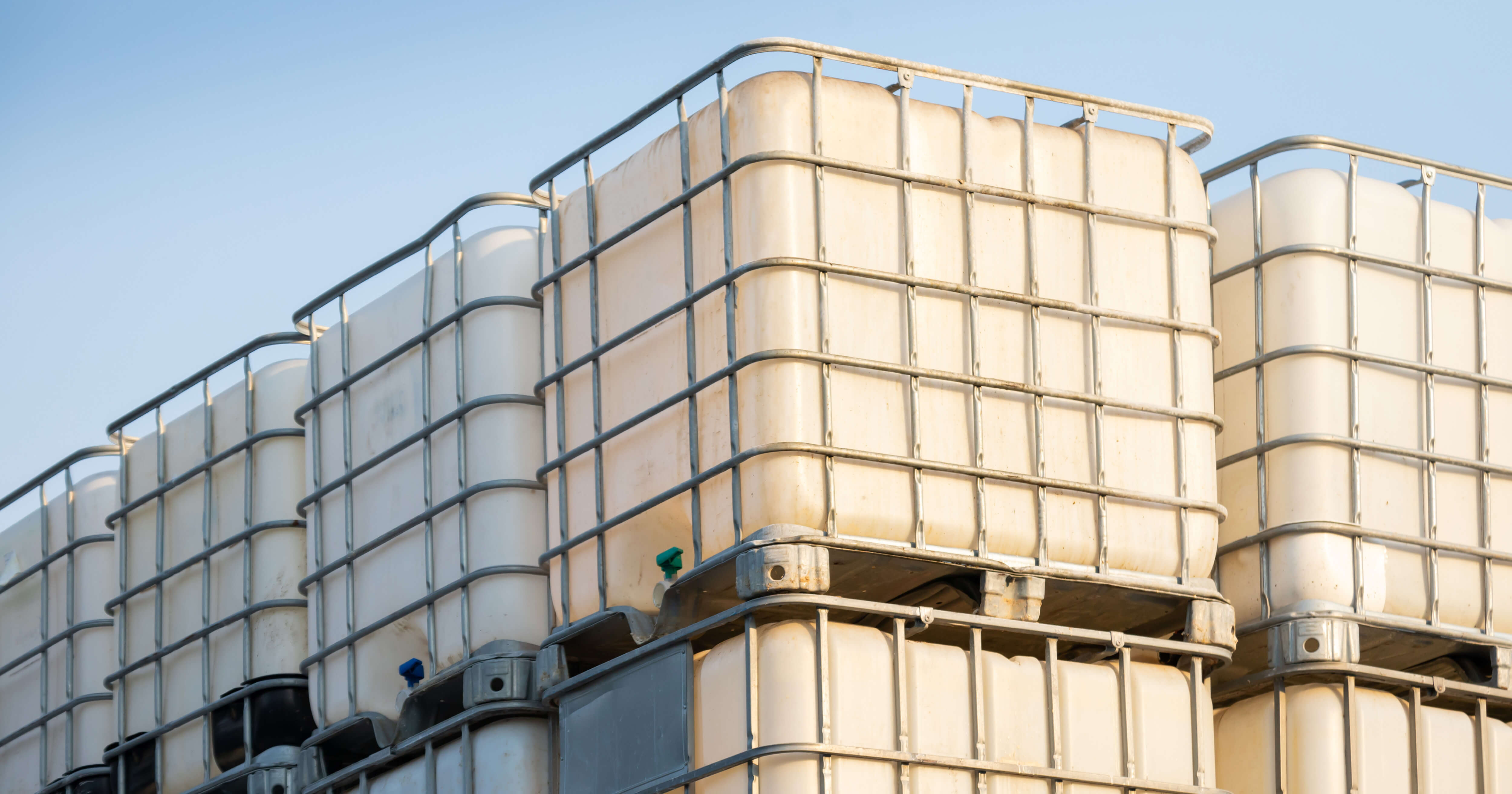Whether wood, plastic or chemicals – basic materials are currently in short supply across the globe. The raw materials market is depleted, and the few materials that are still available are far more expensive than usual.
The chemical and packaging sectors have been hit particularly hard as a result. According to a survey by the industry association Industrievereinigung Kunststoffverpackungen, important plastics such as polyethylene or polyurethane have become 35% and 50% more expensive in the last six months respectively. This is not without consequences for companies that rely on petrochemicals and their downstream products such as IBC containers.
In this blog post, we’ll get to the bottom of the causes and effects of the scarcity in raw materials and show you how to intelligently counteract it using Industrial IoT technologies.
Before you read on: 80% of all IBC containers are sitting unused at some point in your supply chain. Discover how to get more out of your IBC fleet in our free guide!
Is the Coronavirus to Blame? The Causes of the Shortage in Raw Materials
Although it’s tempting to solely blame the pandemic for the current situation on the procurement market, this wouldn’t be in accordance with reality. The low availability of raw materials is the result of a far more complex, multifactorial process. There are three decisive factors:
- Lockdown: The supply chains of the plastics industry span the entire globe and consist of finely tuned, interdependent links. The global lockdown disrupted supply chains in many places. Ships remained in ports, goods piled up in container sheds – this still continues to cause unusual fluctuations in supply and demand long after the first severe lockdown. For example, the port in the Chinese metropolis of Shenzhen had to close for two weeks due to a coronavirus outbreak.
- Force majeure: The coronavirus period also saw a number of force majeure events, i.e. disruptions to raw material supply chains due to acts of nature beyond our control. These include weather phenomena such as winter storms in the USA and the blockage of the Suez Canal by a container ship.
- High demand from China and USA: In some parts of the world, demand for raw materials has increased enormously. The large number of financially strong overseas buyers is now contributing to fewer raw materials being available for German and European countries.
Impact of Raw Material Scarcity on the Plastic Packaging Industry
71.2% of plastics processing companies complained of inadequate supplies of primary products such as plastic granules in the first half of 2021. And there’s still no end in sight. This has posed numerous challenges for the packaging industry:
- Bottlenecks in the availability of packaging: when warehouses are empty and deliveries fail to arrive, orders have to be postponed or cancelled.
- Longer delivery times: goods no longer get from A to B as quickly as they used to. This means that packaging is also in transit for longer.
- Reduced margins: rising prices are causing companies’ margins to shrink, resulting in less investment capital being available.
Particularly when it comes to IBCs, things have changed for the worse for companies. We’re currently seeing an extreme shortage of intermediate bulk containers, primarily due to the fact that delivery routes have become longer and increasingly complicated. Bottlenecks have to be overcome and detours have to be accepted.
Overall, the industry is trying to increase its IBC fleets in order to react in a more agile manner. However, this is either not possible (too few IBCs on the market) or incredibly expensive due to the high material costs for plastics, which causes the prices for IBCs to rise sharply. These additional costs, however, cannot or do not want to be borne by financially struggling companies in the industry.

Mitigate the Negative Impact of Raw Material Shortages with a Smart IBC Fleet
For companies that rely on IBC containers, the situation described can become rather critical, especially if they lose control of their supply chains and inventories, disappoint customers and are barely able to act.
But there is a solution: with the Packwise Smart Cap, you counter the shortage of materials with state-of-the-art Industrial IoT technology. It goes without saying that the Packwise solution cannot procure raw materials when there are none. However, the technology significantly helps to improve your situation by:
- Reducing the amount of IBCs required per company
- Making the use of existing IBCs more agile and transparent
How the Packwise Smart Cap works
The Packwise Smart Cap is a handy, small sensor that is attached to an IBC container and installed in just a few steps. It measures relevant parameters such as fill level, location and temperature and uses this data to create a digital twin of the IBC container in the Packwise Flow web application.
This virtual counterpart of the real physical container allows you to access your packaging from anywhere – whether for planning purposes or to track the current status of a delivery. Instead of unclear relationships, you get full control and transparency over your connected IBC fleet.
Reap the benefits of Digitalizing Your Supply Chain with Packwise
In terms of the prevailing shortage of raw materials, this gives you three significant advantages:
- Improved inventory and customer management
With the Packwise Smart Cap, you always stay well informed about the current inventory of your customers. How high is consumption? Are there any remaining quantities? When is replenishment necessary? Can empty containers be picked up? On the Packwise Flow application, you can see all this at a glance, be notified immediately and react in good time.
The improved visibility benefits your customer management. You can provide your customer with information about the whereabouts of goods at any time and even link their logistics processes to yours. From here, it’s just a small step to customer-friendly supply chain automation.
- Reduced investments in new IBCs
With a digitalized IBC fleet, you’re able to use your packaging more efficiently. Your containers pass effortlessly through several cycles, you have to accept fewer empty containers and you can retrieve your containers faster.
In addition, fewer IBCs are lost due to harmful external influences as the digital twin reports these at an early stage. These positive aspects mean that you can afford to reduce your IBC inventory and no longer have to budget as much capital for new purchases of IBC containers.
- Higher agility through process efficiency
In times like these, the winners are those who are able to act with foresight and adapt their processes spontaneously if necessary. The Packwise solution makes exactly that possible. Connected, controllable packaging units reduce your administrative workload, while the connected IIoT platform enables strategic production planning.
You no longer want to be at the mercy of the commodity market? Then act now and create a measure of independence for your company and customers with IIoT technology.
We’ll be happy to advise you on all aspects of digitalizing your supply chain and equip your IBC fleet with the Packwise Smart Cap in good time. This allows you to deal with current and future bottlenecks in a much more relaxed manner.


